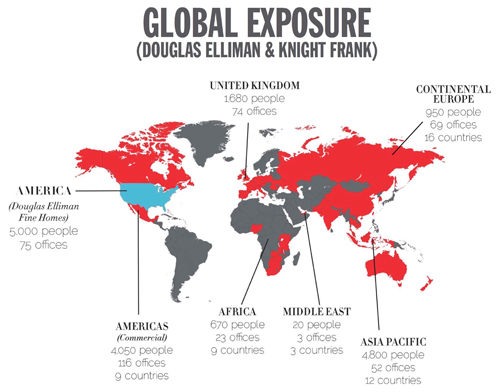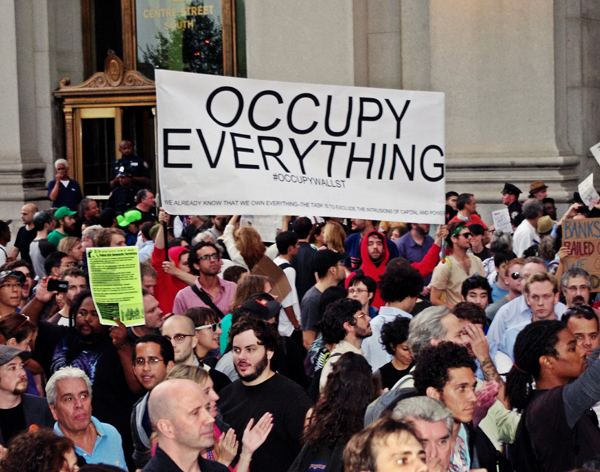Annually, the giant real estate consultancy company brings out The Wealth Report on the state and spread of wealth across the world. Our two part series examines its findings.
Courtesy Knight Frank
It has been over a decade since Knight Frank’s The Wealth Report provided a unique perspective on the spread of wealth across the world. They used property sales as a base to track the countries, and cities, where wealth was being generated, or wealth was moving by way of the affluent immigrating for a far better lifestyle. They also tied up with wealth consultants across the globe to track how the Ultra High Networth Individuals invest, spend, travel, shop and eat.
Their moniker for their survey of the Utra High Networth Individuals across the world is ‘Attitudes Survey’, and the 10th edition describes how the outlook of the world’s wealthy has changed over the past decade. Their partner on the 2016 report was Wealth-X, the ultra-wealth intelligence consultancy. Their executives interviewed leading private bankers and wealth advisors who, between them, manage assets for about 45,000 ultra-high-net-worth individuals (UHNWIs) with a combined wealth of over half a trillion US dollars.
Some Excerpts:
One of the key trends The Wealth Report has tracked since it was first published in 2007 has been global wealth distribution –or to be more precise, where the ultra-wealthy live and how populations are changing. This year we feature data, provided by New World Wealth, from more countries, cities and wealth bandings than ever before. If, for example, you need to know how many people with a net worth of over $10m currently live in Accra or Azerbaijan, we can tell you.
Our analysis of this comprehensive data over the next few pages concentrates on how the population of ultra-high-net-worth individuals has changed on a regional basis over the past 10 years, the latest annual shift and how it is predicted to move during the next 10 years. A pivotal shift is that the growth of UHNWI populations is forecast to slow significantly over the next 10 years when compared with the past decade. Between 2014 and 2015, a slump in many global equity and commodity markets led to an actual drop in the number of UHNWIs around the world.
Luxury brand shoppers
The Slowing of Growth Paradigms
The global population of ultra-high-net-worth individuals (UHNWIs) has grown by 60% in the 10 years since The Wealth Report was first published.
According to data prepared for the 2016 report by wealth intelligence company New World Wealth, there are now 187,500 UHNWIs with $30 million or more in net assets, excluding their principal residence, around the world. This figure is up 61% from 116,800 in 2005. This growth reflects the increase in asset prices and investment returns, especially in the years following the global financial crisis. Emerging economies have experienced the fastest rates of ultra-wealth generation over this period.
While the global population of UHNWIs is set to continue expanding, the pace will be significantly slower than the previous 10 years. The total number of ultra-wealthy individuals is forecast to rise 41% to 263,500 by 2025. Predicted growth rates vary widely on a regional basis, with emerging economies still leading the way. The ranks of Asian UHNWIs are set to expand by 66% over the next decade, compared with 27% growth in Europe.
According to New World Wealth’s forecast, in 10 years North America will still boast the largest population of UHNWIs, but the increase of 21,000 will be overshadowed by the 27,000 people in Asia who will see their wealth exceed $30 Million by 2025. Despite this long-term growth trend, data from 2015 shows the first annual dip in ultra-wealthy populations since the global financial crisis began in 2008.
Last year only 34 of the 91 countries for which individual data is compiled saw a rise in UHNWIs. Almost 6,000 people dropped out of the UHNWI wealth bracket in 2015 – a 3% slide. This downward shift reflected slower economic growth and the more volatile financial climate. The rate of global economic growth slowed in 2015, while growth in equity, commodity and other asset prices also decelerated.
In fact, most major stock market indices were down in 2015 in US dollar terms. “Some of the biggest fallers included Canada, which ended the year down 24%, Singapore, where equities fell 20% and South Africa with a fall of 23%,” explains Andrew Amoils, Head of Research at New World Wealth. “The only notable risers were Japan, Denmark and Hungary, all countries that saw a rise in the number of UHNWIs during the year. Variable market performance was accompanied by lower growth in some property markets around the world. Sharp falls in the oil price also had a notable effect on the ultra-wealthy in many Middle Eastern and some African countries.”
Occupy Wall Street movement against economic inequality
The Rise of Wealth Inequality
The economic growth seen in many countries over the past few decades, coupled with increased globalisation, has not only underpinned some of the wealth creation discussed in the previous pages but it has also helped to halve the number of people living in extreme poverty and narrow wealth inequality between countries on a global scale.
However, the gap between rich and poor is growing withinmany countries, especially in advanced economies. The increasing power of the “one per cent” is not a new phenomenon. The first edition of The Wealth Report, published in 2007, highlighted the rise of “Plutonomies” – a concept that was coined by economists at Citi to explain the process where the wealthy saw their wealth levels rise more rapidly than other groups.
Since then wealth inequality has continued to climb the political agenda and is now one of the biggest issues facing politicians as they try to address those who feel disenfranchised. Ultimately, feelings of social, economic and political inequality can ferment revolution, as in the case of the Arab Spring.
The electorates in Western economies have also been making their feelings known, with the rise of populist right-wing politicians in the US, France and Hungary, while in the UK, the opposition Labour party has made a significant jump to the eft with the election of Jeremy Corbyn as party leader.
A more fractured political landscape can cause economic uncertainty, and this can impact overall economic growth. As Lynn Forester de Rothschild says in her interview on page 14, entrepreneurs and wealth creators function best in a stable society.
Zuckerberg philanthrophy
Philanthropy
Although protecting their wealth is a preoccupation for many UHNWIs, giving much of it away is also important. Facebook founder Mark Zuckerberg and his wife Priscilla Chan hit the headlines last year when they pledged to give away 99% of their shares– currently worth $45bn – in the social media giant.
On average, 67% of those who took part in the Attitudes Survey said their clients’ philanthropic activities had increased over the past 10 years, with almost 80% saying activity would increase further over the next 10.
A sense of personal fulfilment was cited as the main motivator, although in the Middle East religious beliefs were considered almost as important. However, the way the wealthy are giving is changing. The Zuckerbergs, for example, have created a more flexible limited liability company, not a traditional charitable foundation, to oversee their endeavours.






